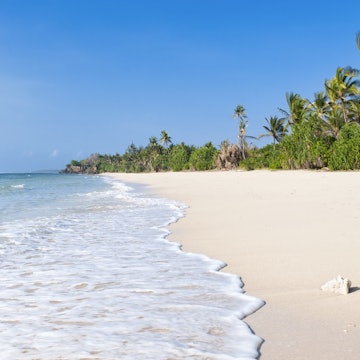

Masai Mara National Reserve. Gudkov Andrey/Shutterstock
The Great Migration is one of the grandest natural spectacles on the planet. Every year around two million wildebeests, zebras and Thomson’s gazelles follow rains and swaying grasslands, moving along ancient paths through Tanzania’s Serengeti National Park and Kenya’s Masai Mara National Reserve. As they do, the great predators of the East African savannah – lions, leopards, cheetahs, spotted hyenas – watch and wait for the passing banquet.
This eternal dance between predator and prey, a life-and-death struggle set against a silhouette of umbrella thorn acacias, gives the Great Migration its unmistakable cachet. Sometimes it’s the sheer drama: when wildebeests and zebras launch into the Mara River, running a gauntlet of crocodiles and big cats. On other occasions it’s the sheer, perspective-altering scale, as tens of thousands of ungulates swarm the horizon as if they were a single entity. Whatever it is, it’s never anything short of thrilling.
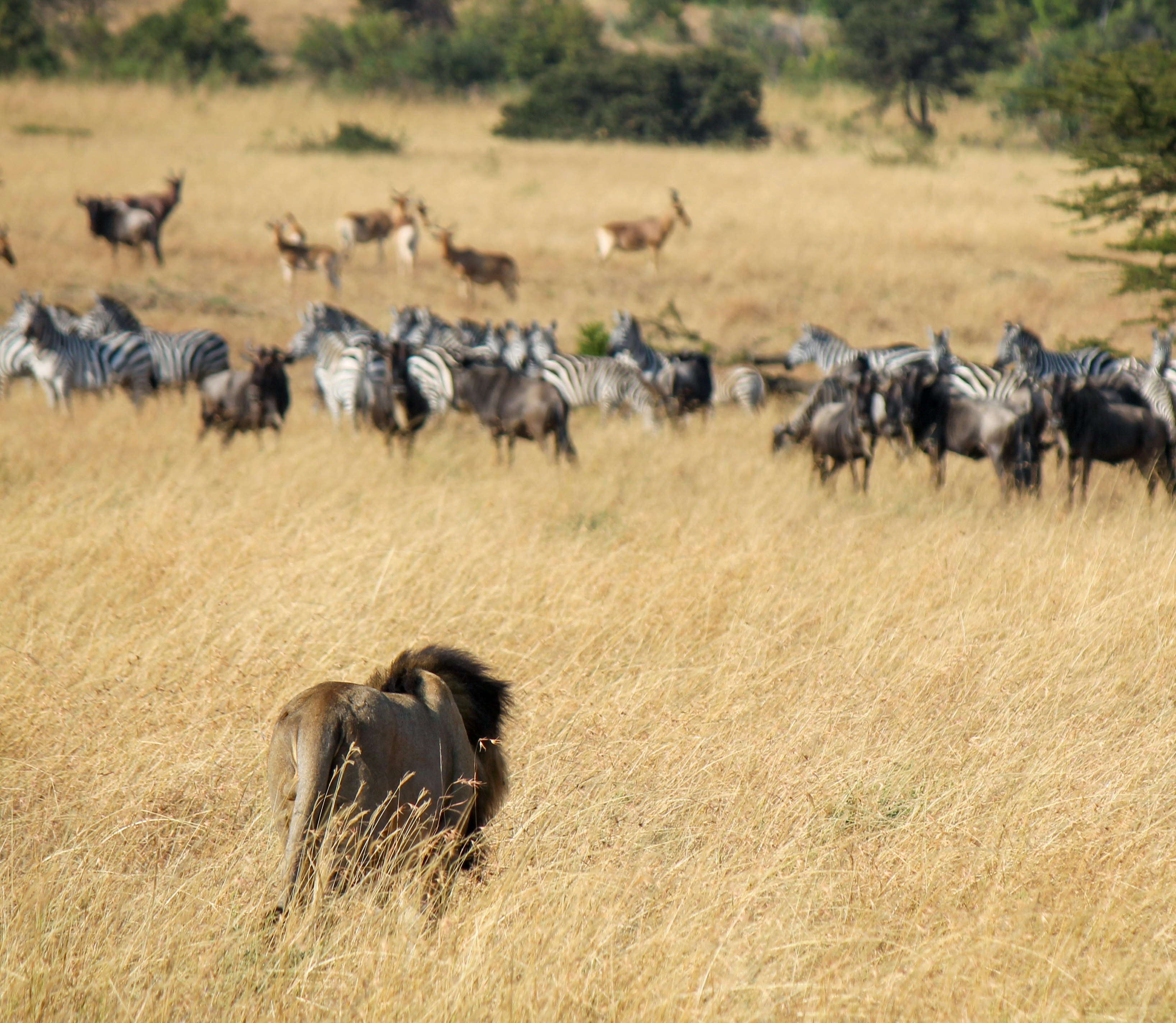
Should I go to Kenya or Tanzania?
In most years the Great Migration spends more time in Tanzania than Kenya. That means more choice in where you can meet up with the grazing herds as they move through the Serengeti. The Serengeti is also such a vast place that the safari trails can seem less crowded than those in the Mara, which is battling overtourism, especially during the migration. And there are lots of other areas of the Serengeti that you can escape to if you wish to explore further. So if the sheer scale of the Great Migration is what gives you frisson, the Serengeti probably wins out.
At the same time, arguably the most iconic moment of the Great Migration occurs when the massed herds of wildebeests cross the banks of the Mara River deep within Kenya's Masai Mara National Reserve. There are moments of great tension – who will be the first to plunge down the riverbank and across? Will there be a lion or leopard lurking by the water’s edge ready to ambush? When will the crocodiles make their move? Although the best vantage points are often crowded with safari vehicles and can feel like anything but a wilderness experience, few moments in nature are more dramatic, as tension builds and these remarkable events unfold.
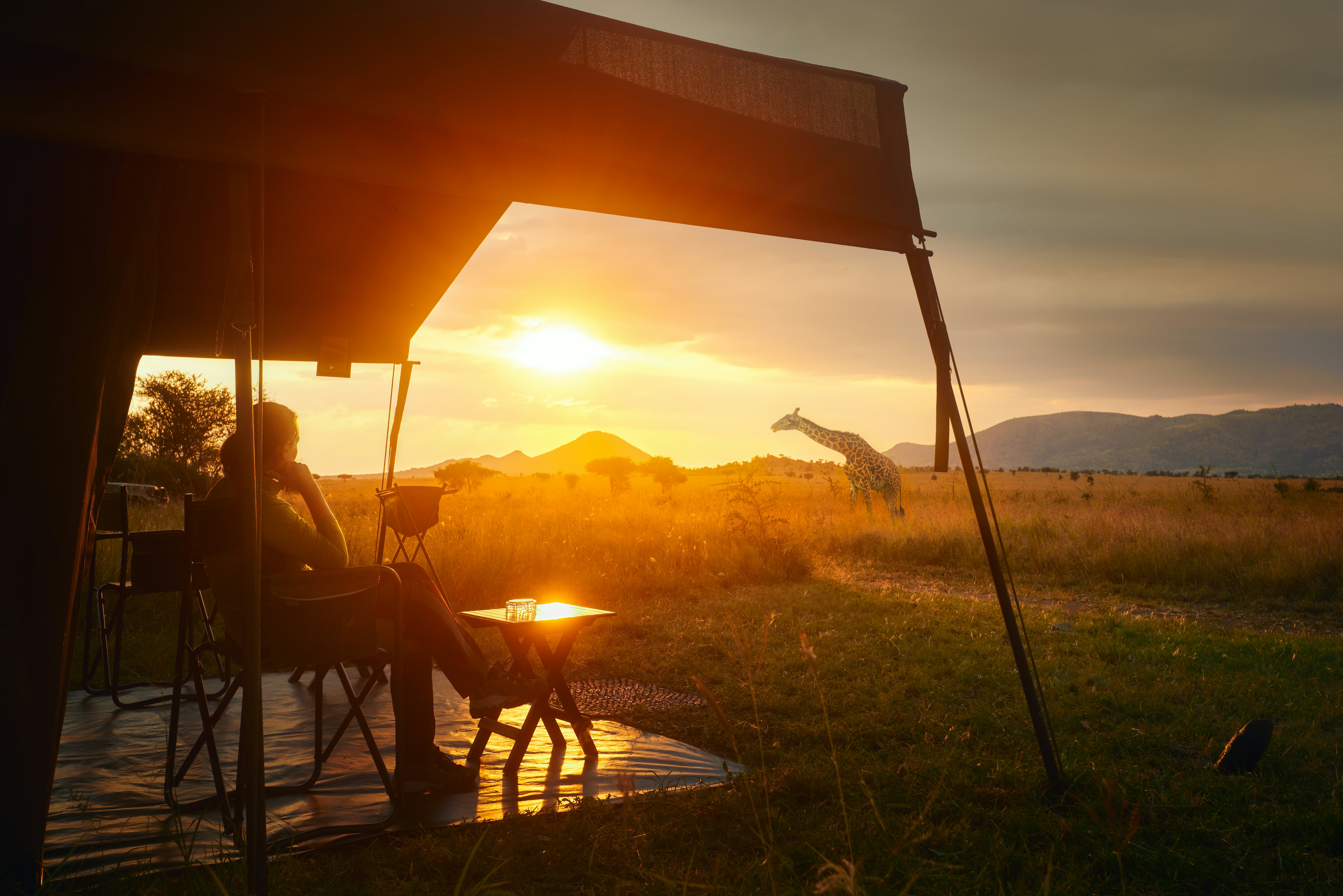
What are mobile camps?
Most accommodations in the Serengeti and Masai Mara are safari lodges or tented camps, but there is one Great Migration specialty: the mobile camp. Mobile camps are tented camps, usually with a handful of safari tents for guests and a dining area, that spend a few months in one place. Then, leaving behind little trace, they move to a different location. This allows the camps to effectively follow the herds. While the level of luxury isn’t quite the same as in the more permanent settings, mobile camps capture the out-in-the-wild spirit of old-style tented camps and are still supremely comfortable. Most mobile camps move twice a year, beginning in the south, then going north in anticipation of the herds’ arrival. Others may have three locations, with an interim stop in the center or west of the Serengeti.
When and where can I see the Great Migration?
Like any natural phenomenon, nothing is guaranteed when it comes to the Great Migration. We can tell you the most likely time frame, based on what usually happens, but this is wild nature, and you never quite know what’s next and when.
Sometimes the herds split into two. Unseasonal rainfall can cause them to double back and return from where they've just come, or to leap forward and skip an entire section. Sometimes they take an entirely different route.
All of this can be inconvenient when you’ve made an expensive, nonrefundable booking. It’s always a risk but an unavoidable one. Just remember that if you turn up and the Great Migration is elsewhere, both the Serengeti and Masai Mara have exceptional year-round wildlife experiences as considerable compensation.
To help with planning, this month-by-month outline details what happens in a typical year of the Great Migration.
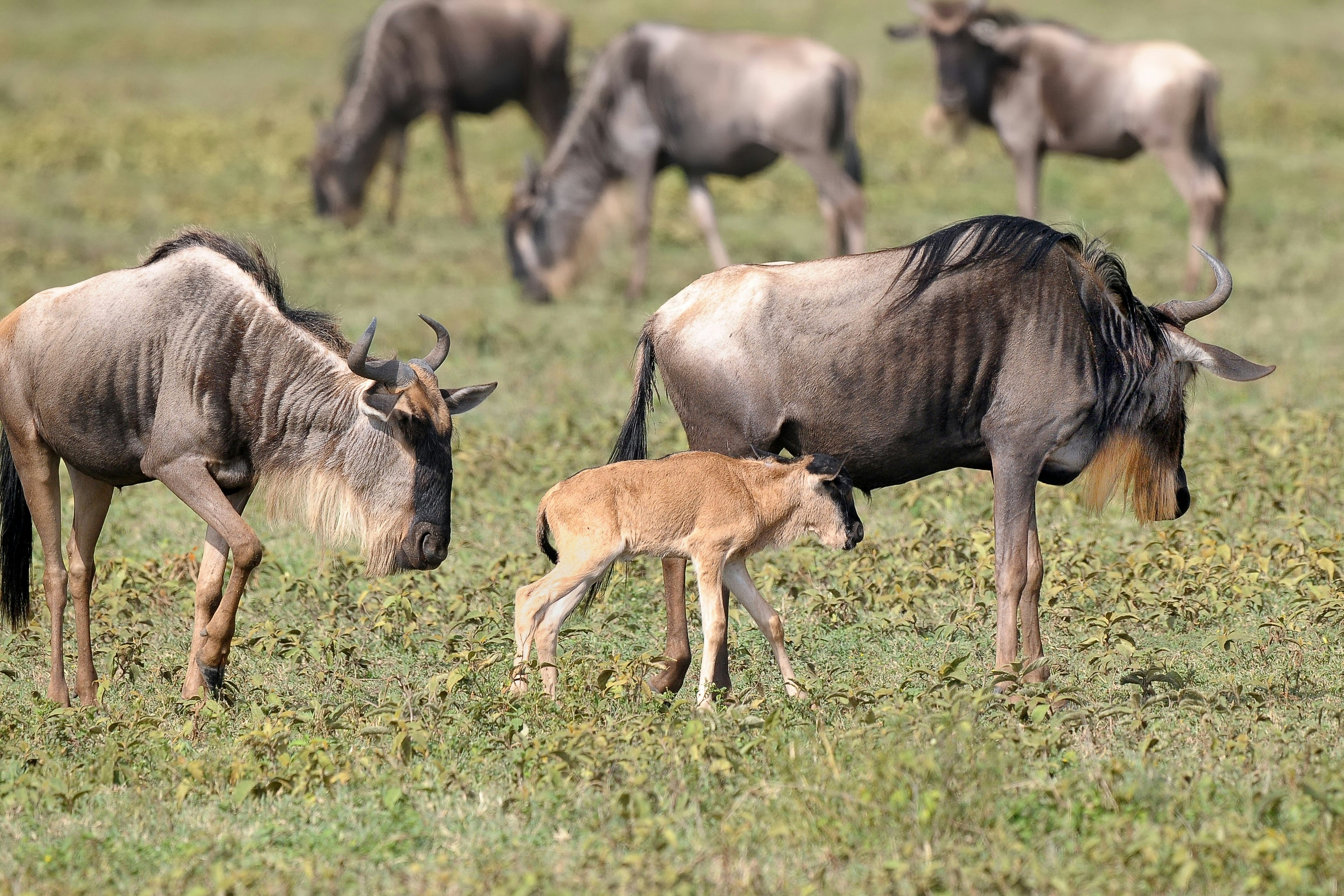
January and February
The year begins with the herds in the south of the Serengeti, usually spilling over into the light woodlands, marshes and grassy plains of the Ndutu region, just beyond the park’s southern boundary. These plains and marshes are where the herds come to give birth, with tens of thousands of wildebeest calves struggling to their feet and circling predators never far away. Remarkably, most calves are on their feet in little over five minutes and can run alongside their mothers in 15. This mass calving brings new life to the herd, in readiness for their long march north.
March and April
In years of good rain, the herds may linger for a few extra weeks in the south, but by mid-March, they’re usually moving north, often in long, sinuous lines that snake across the grasslands. This is something of an interim phase, with few accommodations in these areas of the park. It also corresponds with the Serengeti’s months of highest rainfall, so it is one of the most problematic times to visit, although we have been here during these months and had fine weather, with the herds largely to ourselves.
May and June
May is usually when the herds take a left turn, surging up through the central Serengeti, seemingly on the fast route to Kenya, only to veer west and out onto the grasslands of the Grumeti corridor. I have slept out in the west when all was quiet, in a year when the herds took the short route. Another year, the herds thundered past my tent, so many animals that it seemed to last all night. Some wildebeests will cross the Grumeti River with its crocodiles, as others funnel northwest into the northern Serengeti via the long, empty landscapes that separate the central Serengeti from the quiet north, which has just a handful of luxury camps. By the end of June, the herds are nearly ready to cross into Kenya.

July and August
I have stood on the heights overlooking the Mara River where it marks the border between the two countries and the earth seemed alive, a seething mass of animals on the move and gearing up for the crossing. There are more dangerous crossings further on, but once they cross the Mara here, the skittish herds seem thrilled by the experience, surging at great speed across the plains, then slowing to enjoy the bountiful grasslands of the Masai Mara. Sometimes they cross in June, sometimes August, sometimes not at all. But most often, by early to mid-July, most of the main herd is across and milling around the Mara. These months, July and August, are the busiest months in the Mara, and the many (too many?) lodges of the Masai Mara National Reserve track the herds to make sure you don’t miss them. When it all becomes too much, retire to one of the exclusive surrounding conservancies – Mara North, Naboisho, Olare-Orok – where mini migrations occur, and the wildlife watching is Kenya’s best year-round, with only a fraction of the visitors.
September and October
The herds never seem like they’re in a hurry to begin their long journey south – until they are. One minute they look like they have no intention of leaving this paradise of abundant, nutritious grasses; the next they’re on the move as the first restless souls begin sniffing the wind and sense the coming rains hundreds of kilometers away in the south. September is usually reliable when it comes to seeing the migration in Kenya, and the herds sometimes even stay until well into October. But each passing week that you delay your visit to avoid the crowds runs the risk of missing the migration, especially as the calendar turns into October.
November and December
Come November, the spectacle is largely over, or at least is much harder to see as the migration moves steadily southward along the Serengeti’s eastern border. There are few tracks in these parts, rain is possible, and accommodations are hard to come by – this is one of the least promising months for seeing the migration. The same often applies to December. But if you were to sit on the terrace of your tent in Ndutu or southern Serengeti nursing a quiet drink in December, you just might see the herds coming your way, making their way south across the northern horizon.
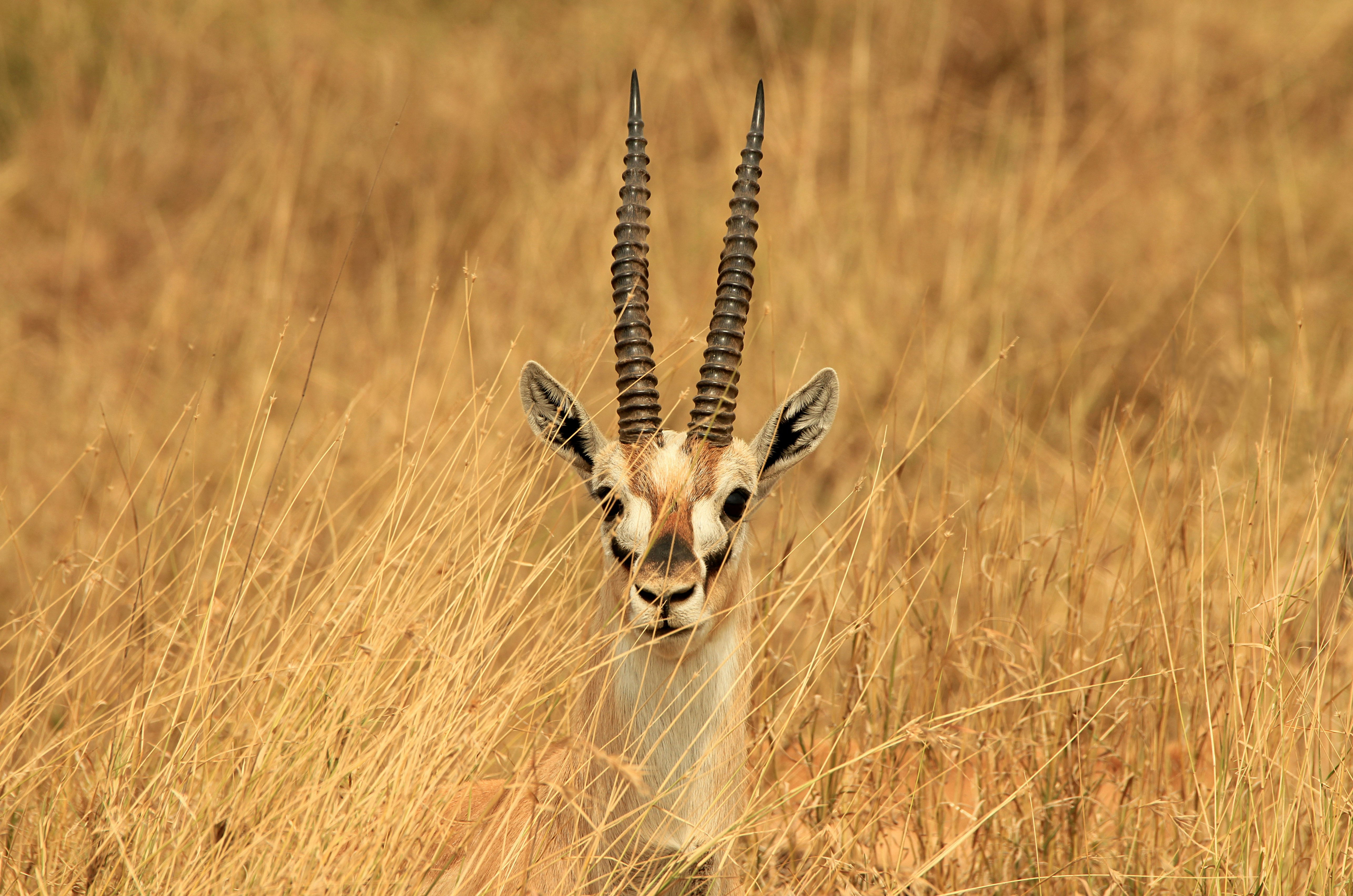
Where can I learn more about the Great Migration?
Lonely Planet’s guides to Kenya, Tanzania and East Africa have detailed guidance on planning a safari. SafariBookings is another excellent resource.














